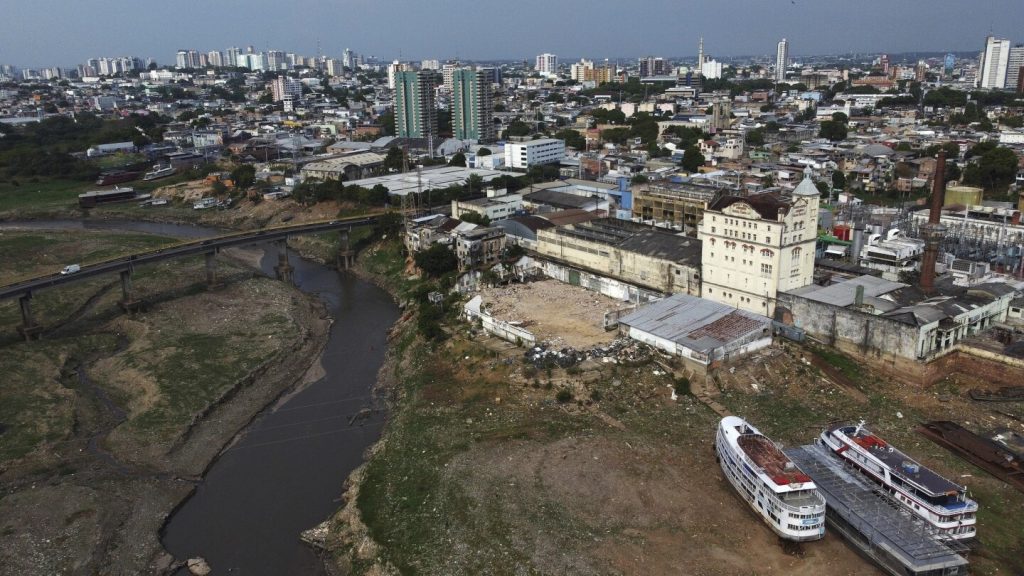Drought is wreaking havoc on Brazil’s Amazon rainforest, with rivers reaching historically low levels. The Negro River, one of the Amazon River’s main tributaries, saw a significant drop in water levels within just three months. The water levels fell from nearly 27 meters to 13.9 meters, putting it on track to break records for the lowest level in 122 years of monitoring. This drastic decline has left riverine communities stranded, with authorities distributing potable water and supplies while passenger boats and supply ships struggle to navigate the shallows.
The drought is also impacting the region’s economy, particularly the fishing industry. Limited access to fishing areas is endangering livelihoods and causing food supply shortages, leading to increased prices for essential goods in the area. This crisis is not only affecting the Negro River but all major rivers in the Amazon, with the Madeira River, the longest tributary of the Amazon, experiencing the most significant decline. The water levels in Brazil’s Amazon typically fluctuate with rainy and dry seasons, but the current situation is unprecedented, with rivers expected to remain low well into October.
The situation is dire in Manaus, the largest city in the Amazon rainforest, where the Negro River meets the Amazon River. Water levels in the Negro River should be around 21 meters at this time of year, according to the nation’s geologic service; however, the current levels are much lower. The Madeira River has also seen record-low levels, with the water dropping to just 25 centimeters, significantly below the historic average. While the levels increased slightly the following day, the overall outlook for the region remains bleak, with critical water shortages expected to persist for the coming months.
The drought’s impact is evident in the shrinking water bodies and visible riverbanks around Manaus. The Taruma Acu and Sao Raimundo rivers, connecting to the Negro River, have also been significantly affected by the ongoing water crisis. The images captured in late June and early July highlight the severity of the situation, with experts warning of the ecological and economic consequences of the prolonged drought in the region. The environmental degradation is a cause for concern, as it not only affects the local communities but also the fragile ecosystems of the Amazon rainforest.
The Brazilian government and local authorities are working to address the immediate challenges posed by the drought, including providing assistance to affected communities and ensuring a stable supply of potable water. However, the long-term sustainability of the Amazon region remains a pressing issue, with climate change exacerbating drought conditions and threatening the biodiversity of the rainforest. As the water levels continue to drop, it is essential for stakeholders to collaborate on sustainable solutions that prioritize environmental conservation while supporting the livelihoods of those dependent on the rivers for their daily needs.
Despite the challenges posed by the drought, there is hope that proactive measures and international collaboration can mitigate the impact on the Amazon rainforest and its inhabitants. The ongoing monitoring of water levels and environmental conditions is crucial in understanding the long-term effects of the drought and implementing resilience strategies for the region. By working together to address the root causes of the water crisis and promoting sustainable practices, there is a potential to safeguard the Amazon’s rich biodiversity and ensure the well-being of the communities that rely on its resources for survival.


